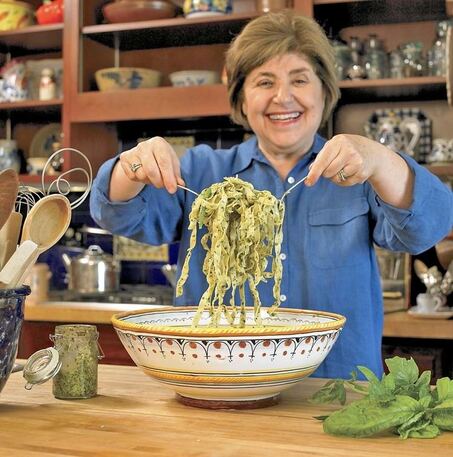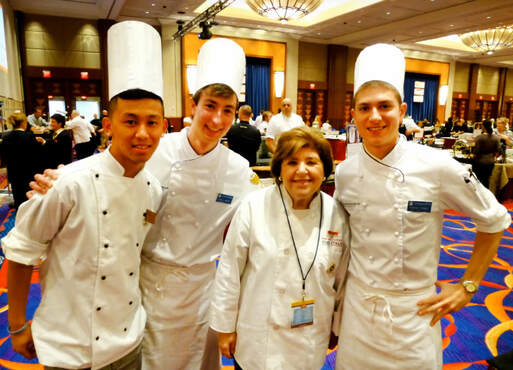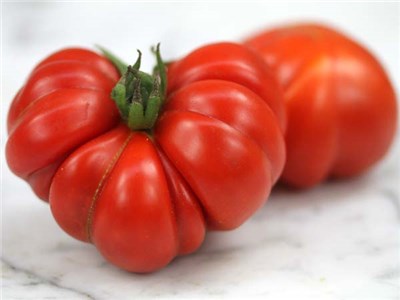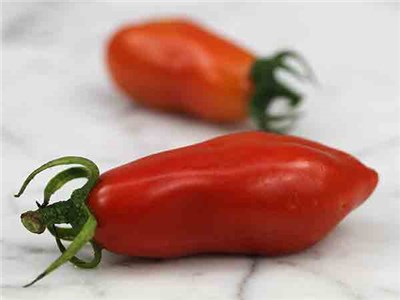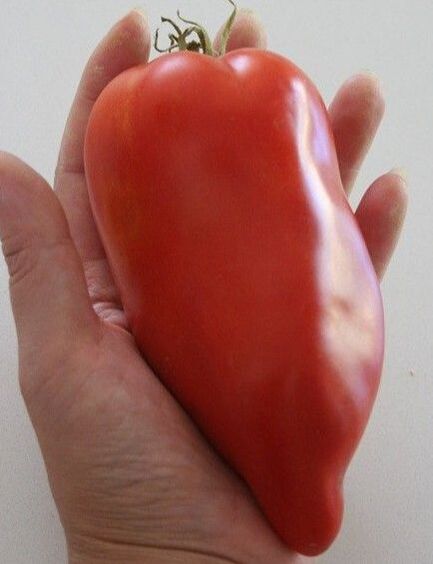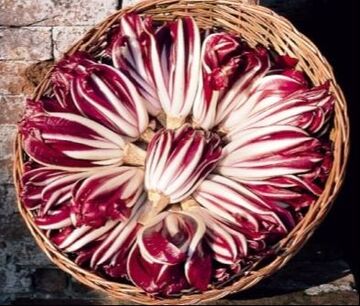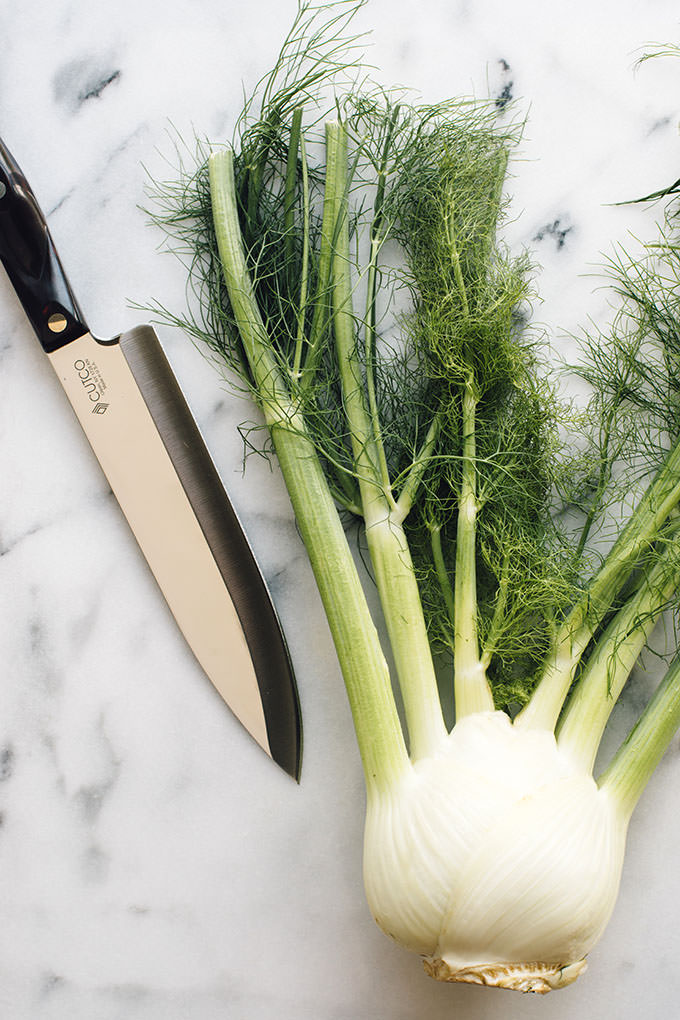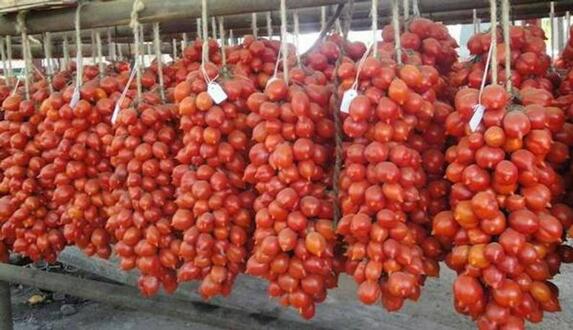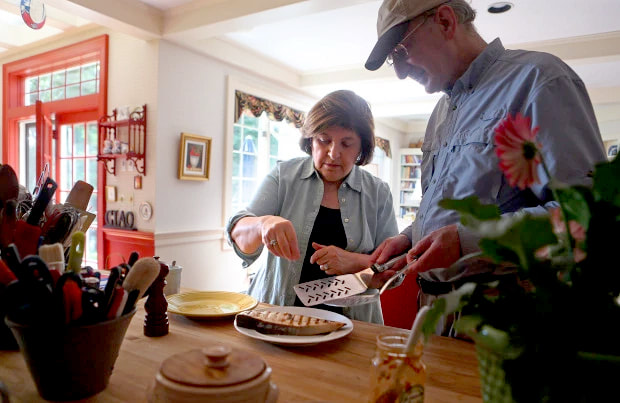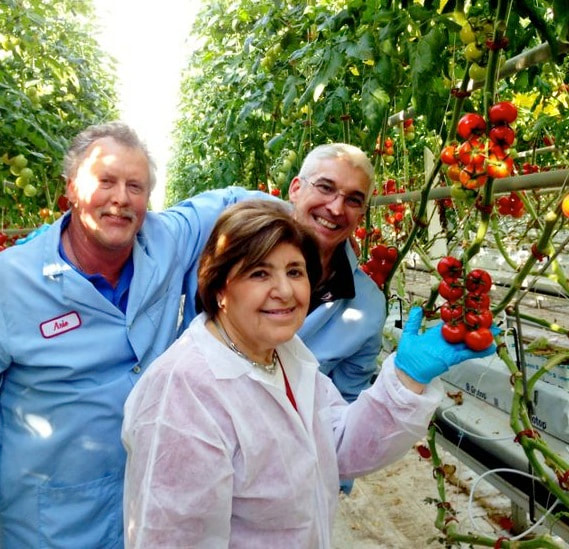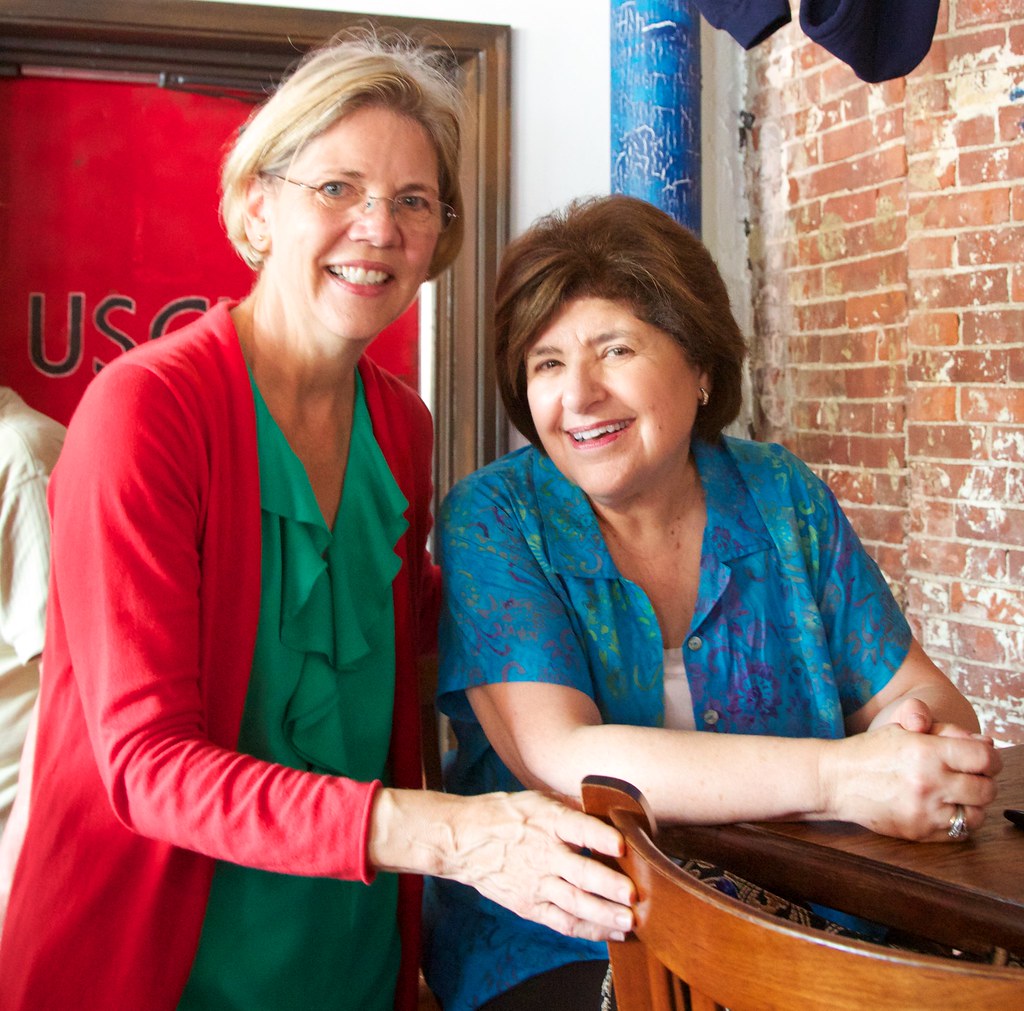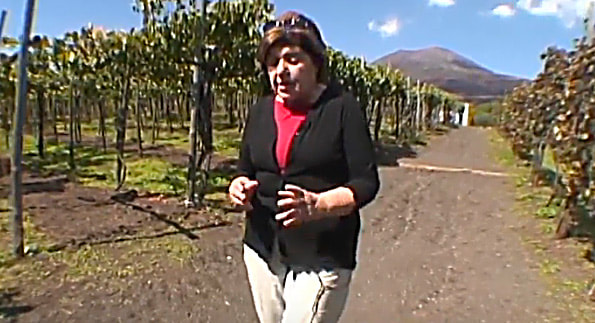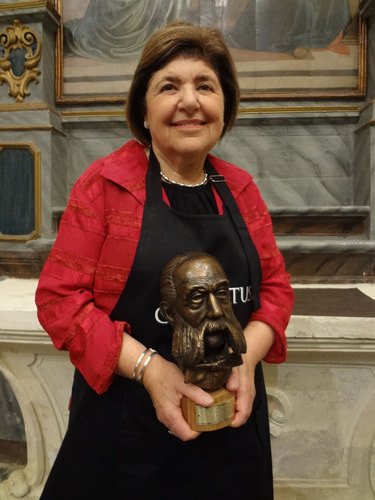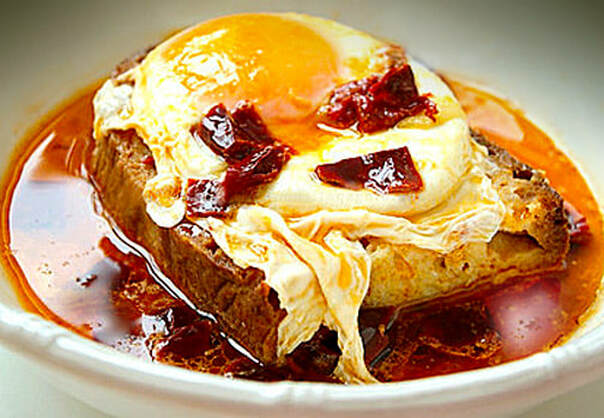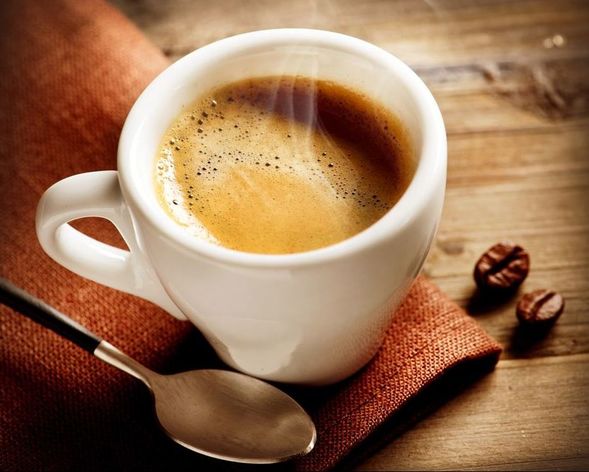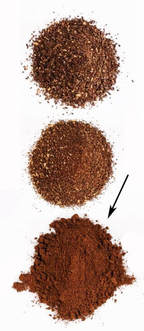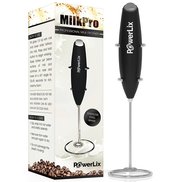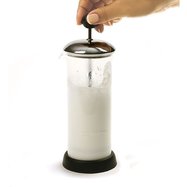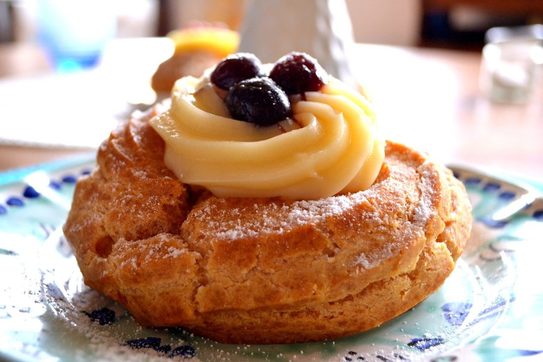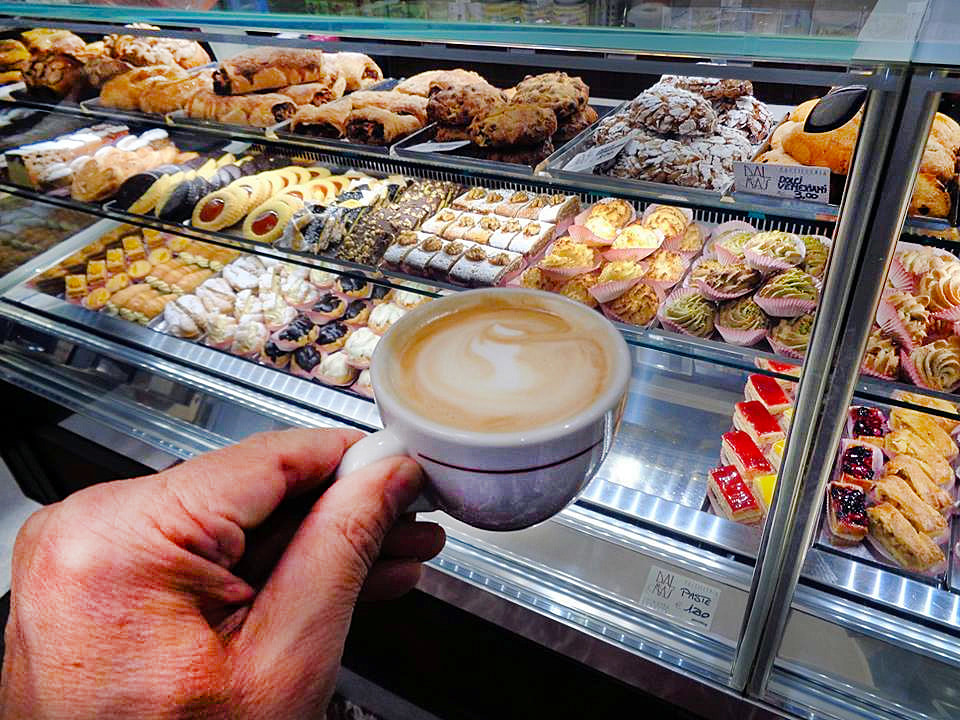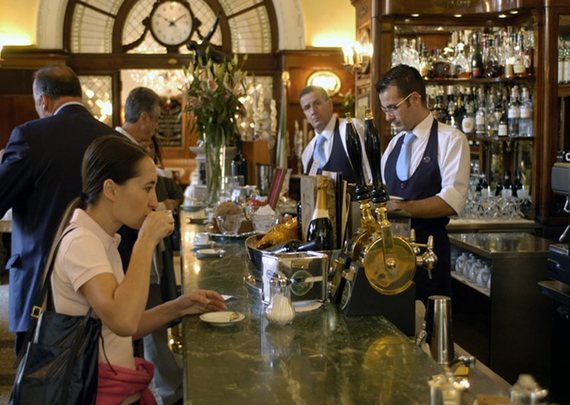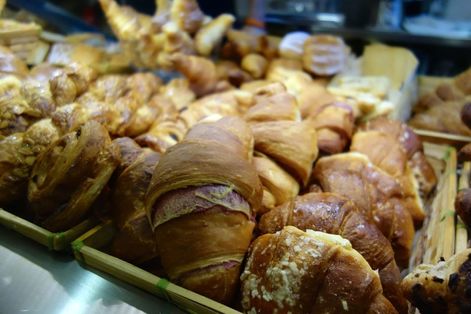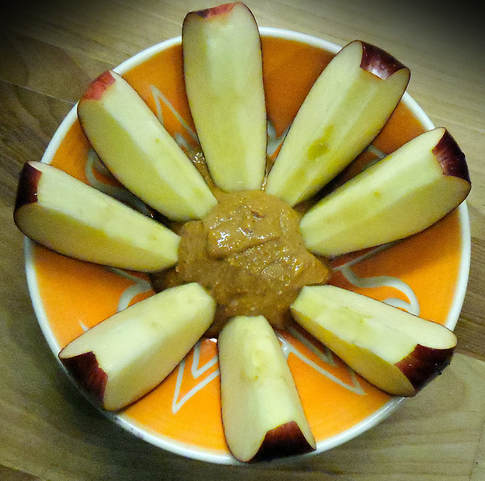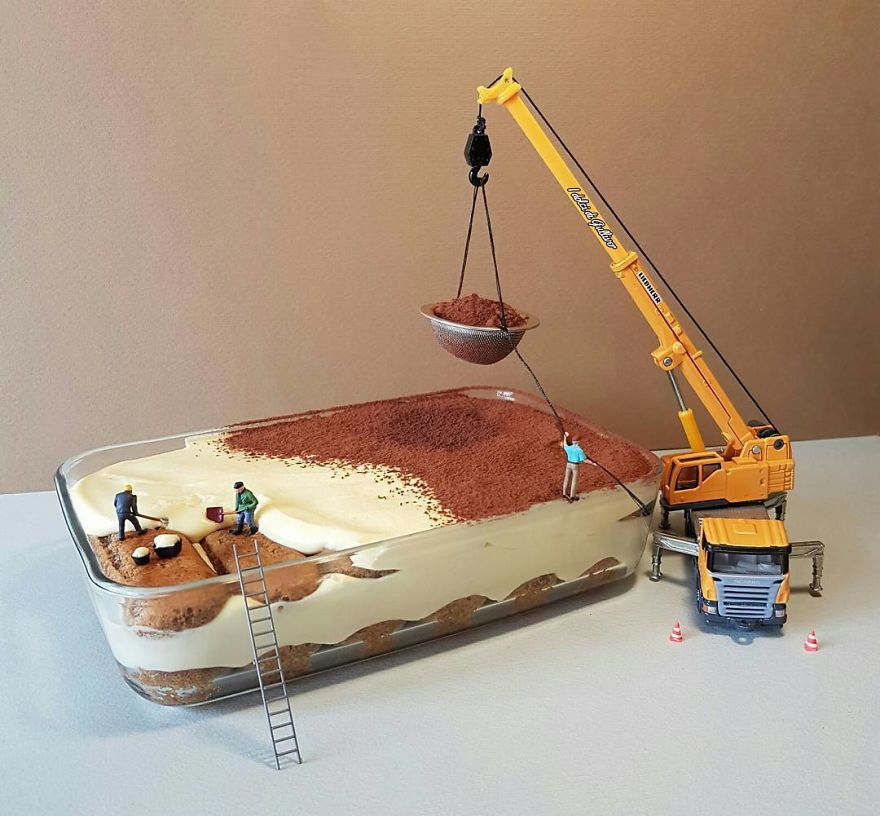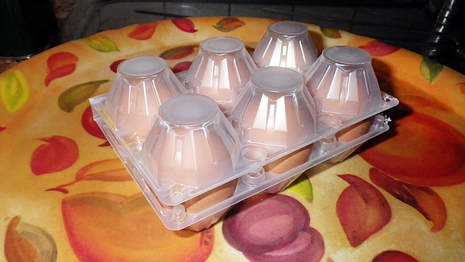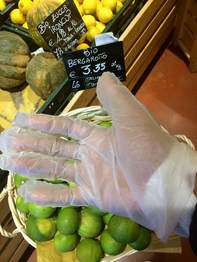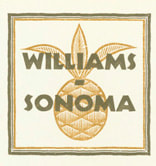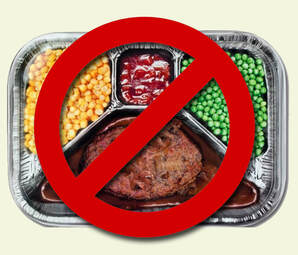 Continued from Part 2... Finzi: The first time our family visited Molfetta (where my father was born) we didn’t have time to meet the relatives that still live there (although we've gotten to know each other since on Facebook). What advice would you give to someone with a desire to approach long-lost relatives in Italy, especially if there is a desire to collect the heritage of recipes from their famiglia? Mary Ann: Call or email them; send photos; plan a meeting with them; bring old family photos if you have them. Finzi: When you first met your Italian relatives, what impressed you most? Mary Ann: Their genuine hospitality and love of connection with you. My cousins were especially welcoming. Finzi: I lived in France for a while and tried my best to be a decent French cook, but after experiencing the simplicity of regional Italian cooking on our voyage throughout Italy, I immediately was drawn back my Italian roots. It’s amazing to think that in centuries past, the food eaten by the Italian upper classes was in the French style. Why do you think the Cucina Povera rose to the top of Italian cuisine, with its fairly simple ingredients and basic techniques? Mary Ann: Because that is the true Italian cooking. It was only the upper class Italians who employed chefs called monzu. These were Italians trained in France and what they cooked was truly French and not Italian. Finzi: When my parents got married, according to my mother, she “wanted an American household”, so she didn’t teach her five children Italian. I’ve read that you took lessons on how to speak Italian. Did your mother have this same attitude to “Americanize” your family in this or any other ways? Mary Ann: No, my mother spoke Neapolitan dialect because my Nonna Galasso--her mother--lived with us. My mother would never serve an American style TV dinner and neither would I. Finzi: I’ve never heard you talk about having a second home in Italy. If you do, can you tell us a little about it? And if not, of all the beautiful regions and towns in Italy, where would you love to live, and can you describe your Casa dei Sogni, or Dream Home for us? Mary Ann: I go to Italy every year but do not have a home there; if I did, it would be in Siracusa because I love this baroque town; my second choice would be Torino. 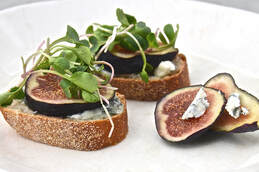 Finzi: Your culinary life was influenced by two Nonne, but not everyone has an Italian grandmother to help educate them on how to prepare Italian dishes. In a way, you have become that Nonna for the millions of us who have watched you cook for nearly 30 years. Can you tell us something about your Mary Ann Esposito Foundation and your desire to pass along your passion and techniques to future Italian chefs? Mary Ann: Thanks for asking! The foundation provides scholarships for students in culinary degree programs in universities offering the study of Italian regional foods and is also establishing a legacy library online to record for posterity, regional recipes that otherwise would be lost to time for future generations. All donations in any amount are most appreciated. Your Grand Voyage Italy readers can go to www.ciaoitalia.com and click on “foundation” to learn more and to make a donation. Finzi: I want to really thank you for taking the time for this wonderful chat, Mary Ann. We'll be looking forward to seeing your new episodes on PBS... my TIVO is fired up to record every episode! One last thought... For us to envision il pranzo perfetto per Maestra Esposito, what are your all-time favorite dinner courses in La Cucina Esposito? Mary Ann:
Guy Esposito on Gardening  Finzi: When I was a boy, my Dad taught me all about saving seeds and the benefits of Home Grown Tomatoes, and now my 15 year old son grows them with me. Our favorites are Eva Purple Ball, Jersey Devil and Giant Belgium. Which are your top three favorite heirloom tomato varieties, and why you like each. Guy: Costoluto Genovese for fresh eating and preserving, intensely flavorful, deep red flesh); San Marzano are the only ones that match to those in Campania for sauce; Redorta for eating fresh, making sauces, canning or drying. It's better than San Marzano for growing in colder climates. 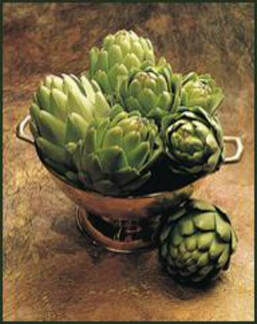 Finzi: For some reason, I’ve always had less than good results with Costoluto in our garden and Redorta is one we haven’t grown. I’ll try some next season. I’m in Zone 6a in Bucks County, Pennsylvania (April 15, last frost) and still I wish the growing season was a bit longer than it is. What are the problems growing vegetables in your short, Zone 5b growing season in New Hampshire? Guy: We get a late start after May 31 because of such a short growing season. Finzi: What do you consider the essential vegetables for an Italian gardener to grow, and for beginners, which do you think are the easiest? Guy: Lettuce, zucchini and radishes are easiest and the hardest are melons and artichokes. Finzi: Were you always a gardener or did your garden develop as Ciao Italia became a more prominent part of your lives as a couple, and what compels you to grow your own vegetables? Guy: I have been gardening since Medical School. We are believers in farm to table food without pesticides. For good health we maintain a Mediterranean diet. Finzi: We are also pretty much organic in our garden, but can always do better with a heathier diet. At least we make pretty much everything from scratch. I just wish we had a good fish monger near us. My wife Lisa would love to grow huge bushes of rosemary like we saw in Italy. For me, pomegranates and olives. But of course, we can’t in our Pennsylvania climate. What don’t (or can’t) you grow in the garden that you wish you could, or would like to grow, and why? Guy: Radicchio di Treviso and Bulbing Fennel (finocchi). Both are delicious for salads or cooking. Finzi: I’ve watched videos on how complicated it is to grow Radicchio di Treviso. Definitely not for the home gardener! What single vegetable or other crop has May Ann wanted you to grow that you haven’t yet, and why haven’t you grown it? Guy: Piennolo del Vesuvio tomatoes. It's just not hot enough here in New England and we have the wrong type of soil. . Finzi: I love the idea of growing these but even if I could, I doubt if they would last through the winter, hanging in large bunches, the way they do in Campania. If you could only grow one, solitary crop, which would you grow? Guy: Lettuce! Virtually every day we eat large salads every day. Finzi: That’s one crop I wish was possible to grow all season long. I’ve grown a variety of types, but some years, the rabbits and chipmunks get the best of them. What are the most difficult things to grow in your garden? Guy: Melons and sometimes tomatoes. Melons need a lot of heat and a long growing season. Some types of tomatoes we love can be prone to disease. Finzi: I’ve also had some experience with melons, but they require a lot of attention and even watering--difficult to keep up with in drier seasons. Is it difficult to be the husband of such a famous chef, or do you consider yourself a partner in Mary Ann’s efforts—and how involved are you in the production of the show? Guy: Mary Ann is first and foremost my wife. I am involved with Ciao Italia as the head gardener and wine consultant. The Mary Ann you see on TV is the exact same person in real life. I am a lucky man! Finzi: You certainly are. Mary Ann and Guy, I want to thank you both for being so generous with your time. I’m certain our readers are going to gain a lot of wisdom from the depth and span of your knowledge, experience and passion about Italian cuisine. Alla prossima e mille grazie! --Jerry Finzi Copyright, 2020 - Jerry Finzi/GrandVoyageItaly.com - All Rights Reserved
Not to be reproduced in any form without expressed, written permission. Acquasala (or Acquasale, Acqua Sala) is one of the cucina povera--poor dishes--of southern Italy, especially in the Lucane Dolomites of Basilicata and olive oil rich Puglia. this simple fare was enjoyed by farmers and shepherds. Its close cousin is panzanella, a sort of salad that uses torn up pieces of stale bread reconstituted with water as its base. Acquasala is a dish made from the simplest ingredients that any peasant contadina had around: eggs, onion, water, peppers or tomatoes and especially, the stale bread. Think of it as a mashup between eggs Benedict and an Italian broth, where the broth replaces the Hollandaise sauce. Perfect for breakfast, brunch or even a light dinner. 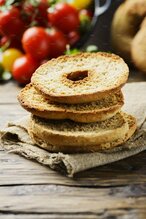 Friselli Friselli In it's simplest form, an acquasala is stale, crusty bread topped with a poached egg and a flavored broth poured over. The bread soaks up the resulting broth and its flavors. I'm certain that others in southern Italy might replace the stale bread with Friselli, a bagel-shaped, bone-dry toasted bread sold in bags in southern Italy. One easy to find bread nowadays is the ciabatta, left to go a bt stale or with the thick slices toasted before use. Don't think of this recipe as being ironclad in terms of the ingredients. Be creative. This is cucina povera, after all, which means that cooks used what they had on hand depending on the season: eggs from their chickens, stale bread, tomatoes, peppers, asparagus, eggplant, zucchini, white or red onions, a bit of garlic, mushrooms and greens. Southerners loved their greens, whether a bit of dandilion, arugla or chives. To be absolutely authentic, warm water (not boiled) is traditionally used to make the "broth", with the peppers and onions added to it for a light fusion of flavors. In Puglia it's often made without eggs and many more more ingredients, a cross between a soup and a salad. 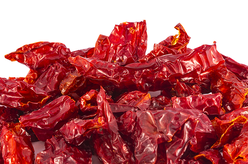 Pepperone Crusco Pepperone Crusco Acquasala Lucan Ingredients (serves 2, with one egg each)
Directions
Boun appetito! --Jerry Finzi Pugliese Acquasala... Copyright 2019, Jerry Finzi/GrandVoyageitaly.com - All Rights Reserved
Not to be published without expressed authorization 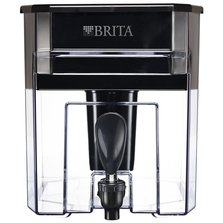 Water The basic thing you need for a great espresso is great water. If your water is suspect--tasting too slimy, has an odor, or is off-putting in any way--in the least, use bottled mineral water or get yourself a Brita filter. As a basic test, if you love the refreshing taste of your tap water on a hot summer's day, then your water should be good to go. 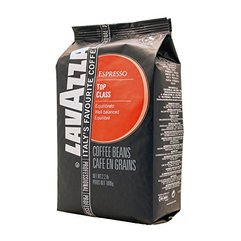 The Beans There is absolutely no difference between a bean labeled as "espresso" or not. Selecting which coffee bean to use for espresso is a personal choice--which means that a world of different tastes are there for the tasting. Espresso is a method of brewing coffee. There are really only two species of coffee beans grown with many varietals (sub-species), and every type is capable of being brewed in different styles--peculator, French drip, espresso, etc. Remember that beans are roasted before you buy them. Roasters nowadays tend to produce a darker roast to produce more smoky, caramelized sugary flavors--as seen in "Italian roasts"--but a very dark roasted bean can mask the more subtle differences in bean types. Roasters are experimenting with lighter roasts which can enhance the flavor of the coffee's complexity. Lesson to learn--experiment with both dark and lighter roasts and have fun discovering flavor profiles that you enjoy. Coffee preference is like selecting a wine... One person's Primativo can be as satisfying as another's Brunello.
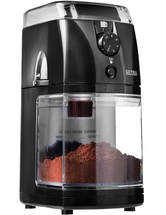 Grinder Beans should be ground using a burr type of grinder (as opposed to a blade type) that can grind finely with many steps of adjustment. Read reviews carefully as some grinder models don't grind fine enough for espresso. (The affordable Secura burr grinder shown is what we use). 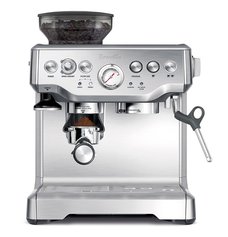 Espresso Machines The best espresso machines should have solid components, create consistent temperatures, are easy to clean, with an easy to understand interface--which is a real task on some of the more complex models. The larger machines come with a built-in grinder to grind exactly the correct amount of beans automatically, a one or two-spouted portafilter with removable basket inserts for either a single or double shot, a self-storing tamper, a milk steamer/foamer, and an espresso cup heater on top. In our opinion, these are for coffee aficionados that like to turn coffee-making into a theatrical event and if you are prone to buying complex kitchen appliances and then find you use them only once or twice due to their complexities, stay away from these machines. They take dedication and perseverance to master and can be difficult to keep clean. They are also power hogs: from 900-1500 watts, which means you should not be using them on the same circuit as your toaster or microwave. There are simpler--and quicker--ways to make espresso, cappuccino and other coffee beverages. 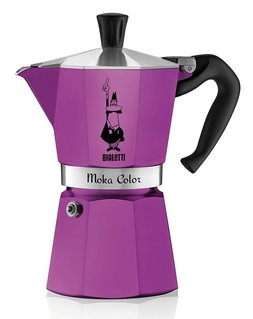 Moka Pot Bialetti made the first stovetop espresso maker back in 1933, and are still using the exact same patented moka pot design. In fact, there are many other companies who have copied their iconic design. There have been over 200 million Moka pots sold since the 1950s, mostly in Italy--60 million Italians can't be wrong. A Moka pot can be found in virtually every Italian households but are gaining popularity all over the world in the last decade or so. The Moka also comes in many different sizes... a tiny one for a single morning espresso shot, or a large one to satisfy a large gathering. It is composed of roughly three components: the base with a pressure valve which holds the water; the basket which holds the coffee; and the "collecting chamber" which the coffee brews into. In between the top and bottom halves are a metal filter and the "O" ring which ensures a pressure seal and to filter the coffee grinds from the coffee produced. The Moka pot boils the water which is forced up through the coffee "puck" and then into the top chamber, creating a foamy crema (head) along with the coffee. The whole process from heating the water to drinking the coffee is about 5-10 minutes, depending on the capacity of your Moka pot.
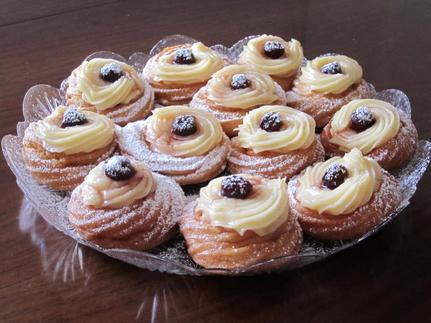 Ingredients For the Custard
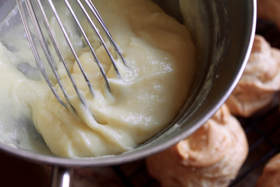 Directions Custard Cream
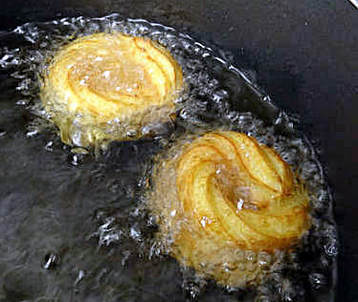 Zeppole
Buon appetito! --Jerry Finzi 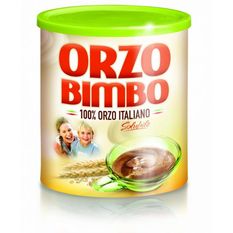 The coffee alternative for your bimbo (baby) The coffee alternative for your bimbo (baby) Italian colazione (breakfast) is a simple daily ritual, and if not at home, had while standing at bar on the way to work: perhaps a scalding espresso, cappuccino (espresso and a dollop of foamed milk) or caffè latte (say "latte" alone and you'll get a glass of milk.) For those Italians wanting to avoid caffeine, they never order "decaf", but might order a drink unknown to Americans: Orzo, a hot, nutty, roasted-barley beverage that looks like cocoa. Orzo means barley in Italian. It was originally intended as non-coffee substitute for children but has gained wide acceptance as a healthy alternative to the caffeine overdose experienced by espresso and cappuccino. 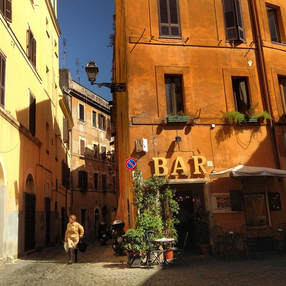 A friendly, neighborhood, Italian bar A friendly, neighborhood, Italian bar While the espresso starts their engines, they still need to fill their tanks in the morning. At home, Italians won't have bacon and eggs but might have cereal or a biscuit, fruit, juice and an espresso. If on the run, they will tend to start their day at a local bar with espresso and a dose of starch and sugar... pasticcini (pastries). Here are some common choices: The cornetto is the less flaky, less buttery version of French croissant. Cornetti ripieni (filled) come with jam, cheese, pastry creme or Nutella. A plain one is a cornetto semplice or cornetto vuoto (empty). By the way, when you see the rectangular shaped ones filled with chocolate, they are called saccottino al cioccolato (sacks of chocolate) not pain au chocolat. This is Italy, after all. A crostata is a fruit tart with a crust of pasta frolla, filled with either amarena (sour cherry), albicocca (apricot) or frutti di bosco (wild berry). The ciambella is basically an Italian doughnut often filled with jam or custard. Viennoiserie are the fancier, more refined pastries with a French influence. They might include brioches, strudel di mele, eclairs and more. For the Italian rushing to work, he has perhaps 5 minutes of chit-chat with a neighbor while standing-up at the neighborhood bar, slurping down his espresso and cornetto in quick order before rushing out the door to work. --Jerry Finzi Voyage Tips:
If you are staying at a B&B in Italy, by law they are only allowed to supply you with pre-packaged breakfasts pastries, toasts and biscuits. A "Bar" in Italy is not like bars in the States. They are places to go for breakfast, espresso, pastries and for lunch they offer panini, small pizzas and focaccia... families with children are welcome. During the lunchtime "riposa", when most places (including restaurants in small towns) close for 2-3 hours, the local Bar is where you would stop for a quick lunch. Lucas has started cooking lately. He's barely 14 years old and sometimes he makes me a panino (smoked turkey, provolone and salsa on ciabatta--his recipe) and he's even made us dinner (he does a variation of my Amalfi Lemon Chicken and Pasta). But of course, he's a teen, and as such, he likes easy, lazy breakfasts...
His Sliced Apples with Peanut Butter is his latest, laziest creation. Lazy, but healthy. (My Father used to eat simple meals like this). An added bonus, I don't have to make his breakfast any more. --Jerry Finzi 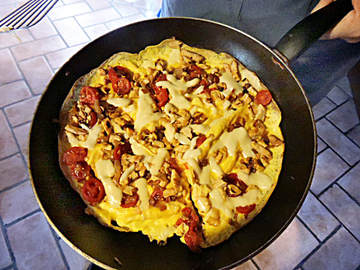 Returning from a Day Trip We decided that we were going to pick up supplies to cook with tonight after our trip to Florence and Fiesole. We tried to look for signs for a Coop supermarket or an alimentari (grocery store), but no signs and the only alimentari on the way back to Mormoraia was closed (at 5pm on a Saturday afternoon?), so we pulled on the side of the road and asked our GPS (Tommy) where the nearest one was. Niente closer that 20 miles... at least that's what he says. I don't trust him totally. After all, besides sounding a bit robotic, his accent is pure American! How much can he possibly know about local shops? He's just a tourist--just like us! So I figured that nearby San Gimignano must have an alimentari outside the historic walls... so we set course... 8 minutes away. We found one! A nice one too. Paper towels to use as napkins, cleanup and to clear my clay dusted rear window... eggs... sliced tachina (turkey)... brasciola (very thin sliced salt cured beef)... little tomatoes... onion... snacks... drinks...butter... half loaf of bread. We were set for dinner and breakfast--or so we thought. 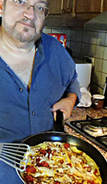 Another side hassle was that we were so chatty with the prospect of a home cooked meal combined with our friend Tommy not calling out turns for some reason as he usually does... we kept missing the turn-off out of town--four times! Sigh. (Our family travel theme song, to the tune of Beach Boys, I Get Around: "Turn, Turn Turn around, I turn around... Turn around, ooh..ooh...oooo... I turn around... I'm gettin' bugged drivin' up and down the same old street...") Back at our agriturismo apartment, we hunted for basics in our cucina cupboards. There were no staples typically found in these apartment or house rentals... salt, pepper, foil, spices, coffee, sugar, etc. So this meant that problem-solving Babbo (Daddy) had to fix this somehow--and we were not going to pay the 50 Euro per person for dinner in Agriturismo Mormoraia's little cafe downstairs! OK... boil water... cook bird's nest pasta we bought... frying pan... butter... slice up the brasciola (salty enough) into the pan. Lucas, sliced those little tomatoes and tossed them in... add some wine... reduce sauce... toss in a bowl and grate little piece of leftover pecorino cheese we had two days ago... butter the unsalted regional bread... pour the rest of the wine... and Presto! My new recipe... Pasta Pomodoro e Brasciola alla Babbo! Lisa and Lucas said it was one of the best meals here so far. Bravo, Babbo! On another morning I made a down and dirty frittata with the little we had in our Mormoraia pantry. Buono gusto! 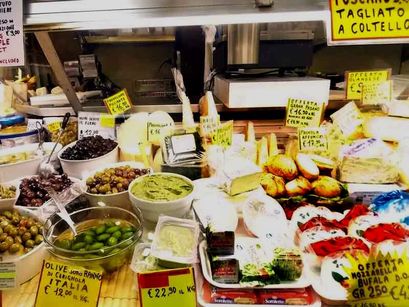 Nothing special... Just a typical display in a local alimenari! Nothing special... Just a typical display in a local alimenari! Getting used to Shopping in Italy At times we bought food at the large supermarkets, which had great cheese displays, not so decent breads, un-refrigerated milk in cartons (none cold), but lots and lots of produce. The fruits and veggies were very good for supermarkets, but the tomatoes disappointed me. They seem to be selling a lot of hybrid hothouse grown tomatoes (like "Tomatoes on the Vine" in the U.S.). Decent quality, but not organic, fresh picked or heirloom varieties. (As it turns out, Italians use SO MANY tomatoes in their diet, factory farmed tomatoes are the norm, although smaller markets may have Heirloom types). 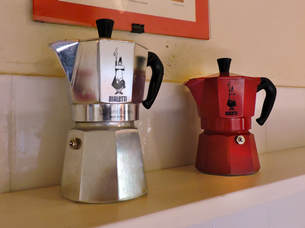 Great cheeses were something we could get anywhere--supermarket or alimentari. Amazing. Cacciacavalo became our favorite... a dumbbell shaped cheese with mellow, nutty flavor which went with everything. Any type of aged Pecorino was a close second. One of my favorite things became the millefiore honey... thick as jam and incredibly delicious on bread in the morning. It was also great with ricotta. (I was never really a fan of American style honey.) Lisa also fell in love with making coffee (espresso, scusa me) in those little Moka pots. I'm sure Santa will leave one under the tree for her. I wish I had access to a pizza oven while in Italy. I would have loved to make pizza there... but heck, I discovered that I make pizza better than we had in most of Italy anyway. Cooking for ourselves in Italy became one of our favorite things, although Lucas always liked eating out in a new ristorante no matter where we were. Personally, I think he was starting to realize that if we ate out, he was guaranteed a visit to a gelateria afterwards! --Jerry Finzi |
Archives
May 2024
Categories
All
|

